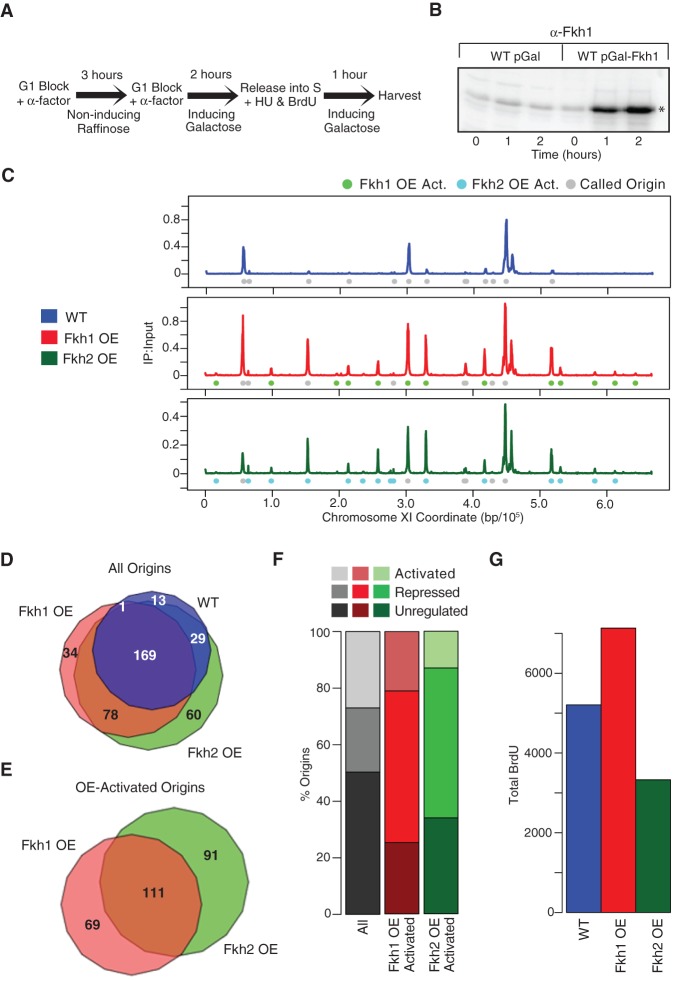Figure 2.
Fkh1-OE and Fkh2-OE stimulate origin firing globally. (A) Scheme for overexpression and replication analysis. Cells grown in YEP-raffinose (noninducing) were blocked in G1 phase by incubation with α-factor for 3 h, followed by incubation in YEP-galactose plus α-factor for 2 h to induce expression while maintaining the G1 block. Cells were released from G1 block into S phase by incubation in YEP-galactose, minus α-factor, plus BrdU and HU for 1 h and harvested. (B) Immunoblot analysis of Fkh1 expression in JPy88 (WT) and JPy89 (Fkh1-OE) induced as in part A; Fkh1 is indicated with an asterisk. (C) qBrdU-seq analysis of JPy88, JPy89, and JPy90 (Fkh2-OE) treated as in A was performed in triplicate and averaged data plotted for Chromosome XI. (D,E) Venn diagrams of all origins identified in the indicated sets (D) and of all OE-activated origins (E). (F) Distribution of previously defined origin classes: Fkh-activated, Fkh-repressed, and Fkh-unregulated among Fkh1-OE-activated and Fkh2-OE-activated origins; “All” shows the distribution of all previously defined origins. (G) Total normalized BrdU signal ±5 kb of all called origins for WT, Fkh1-OE, and Fkh2-OE.

